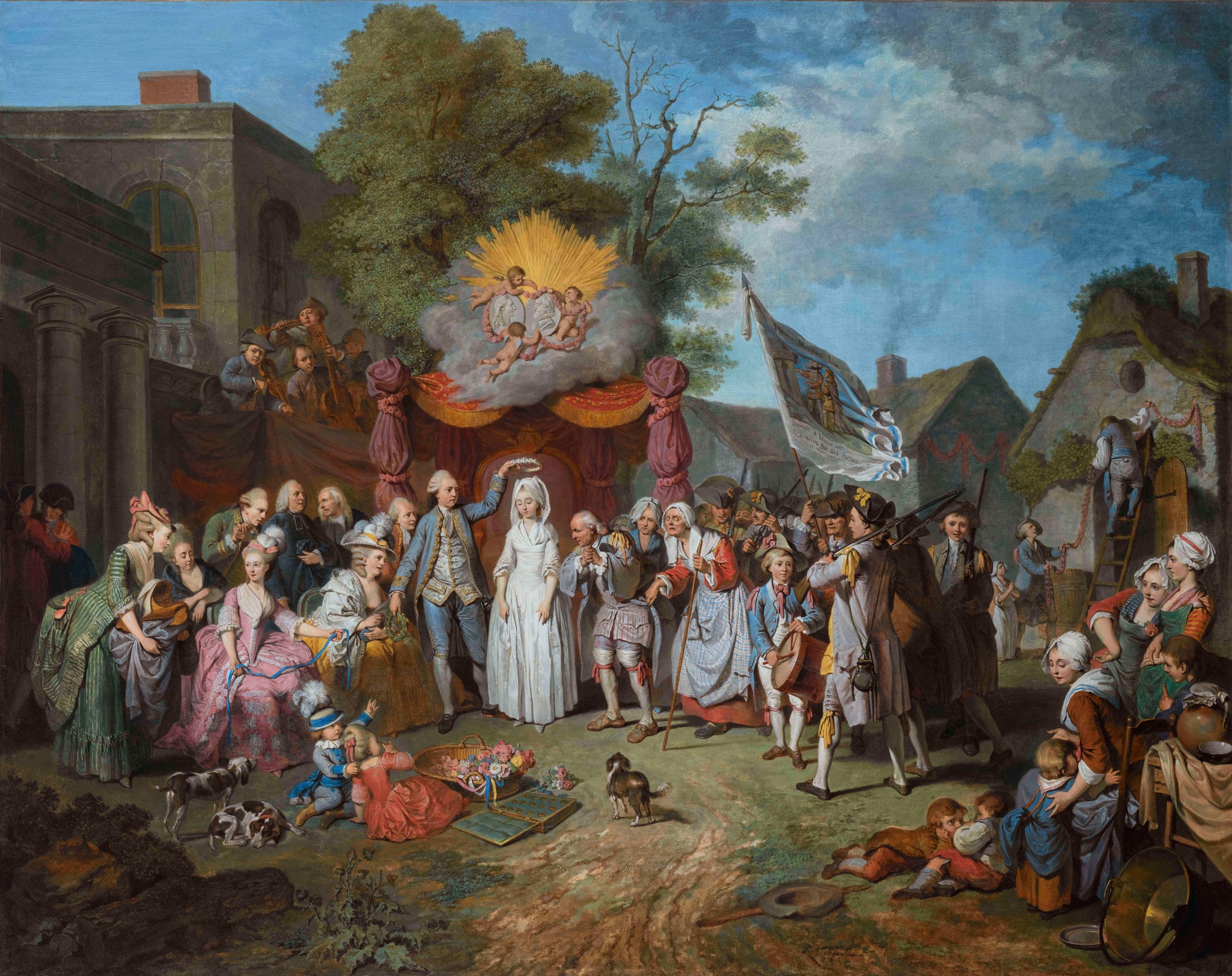
La fête des bonnes gens ou la récompense de la Sagesse et de la Vertu (A Festival for Good Folk or Wisdom and Virtue Rewarded)
Pierre-Alexandre Wille (1748–1821)
Paris, 1776
Oil on canvas
A true portrait of Ancien Régime society, this scene depicts a Normandy Lord, the Seigneur de Canon, Jean-Baptiste Élie de Beaumont (1732–1786), and his wife Anne-Louise, ceremonially awarding deserving peasants – the eponymous “good people” – prizes for their upstanding character and morals. At the centre of the painting, a virtuous maiden is crowned with roses; at her side is a wise old man waiting to receive a crown of oak leaves and ears of wheat. Gifts also await them: bags of coins, medals, clothes and a blue ribbon worn by the Count of Artois as a sign of protection. This ceremony actually took place in Canon in 1775, and was followed by a party. Such events pointed to the new relationship that enlightened aristocrats sometimes hoped to establish with the Third Estate, under the auspices of the clergy. Such charitable performances nevertheless also affirmed the pre-eminence of the aristocracy in the social hierarchy.
This work, presented in 1777 at the Salon de l’Académie royale de peinture et de sculpture, is characteristic of the period’s taste for paintings with edifying moral messages, in contrast with the frivolity of earlier subjects. Pierre-Alexandre Wille trained under the great artist Jean-Baptiste Greuze (1725–1805). Like Greuze, he painted virtuous themes (almsgiving, filial duty, the patriarchal family, village harmony, morality, etc.). Although Denis Diderot never saw this particular painting, he knew the organisers of the ceremony and supported their initiatives. He also approved of paintings on such subjects, because he felt that art could serve a useful moral purpose and improve minds.